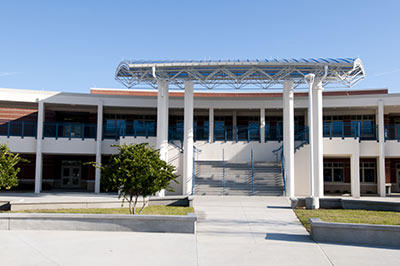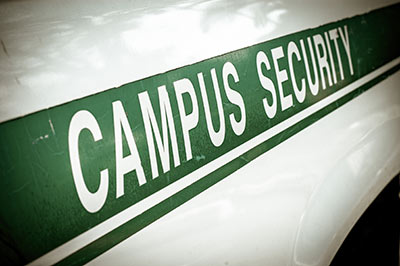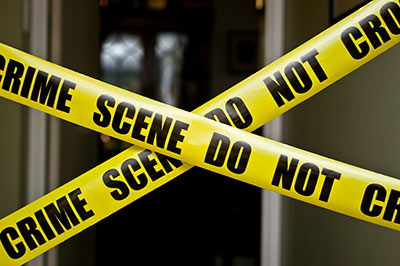Federal Emergency Management Administration (FEMA). Risk Management Series Publication. Chapter 4. Design guide for improving school safety in earthquakes, floods, and high winds.
Tag: Disasters
A Tested, Inexpensive Way to Protect Buildings from Earthquakes
Kelly, 2013. In 1985, construction workers in the southern California city of Rancho Cucamonga put the finishing touches on an unremarkable looking yet revolutionary building. Foothill Communities Law and Justice Center is a four-story courthouse located just 12 miles from the San Andreas fault, the crack in the Earth’s crust responsible for the devastating 7.9 magnitude quake that struck southern California in 1857 and the infamous 1906 earthquake in San Francisco.
State urges better security at schools, but funds scarce
Boston Globe, 2014. Money is short to retrofit existing buildings. Massachusetts schools have new guidance on security from a state report out this summer that recommended monitored entrances, classroom door locks, and other security measures, but money is scarce to retrofit existing buildings, local school officials say.
Design Plays Limited Role in Improving School Safety
Dylan Scott, 2013. In the wake of the Newtown shootings, there has been an insatiable desire to do something. Vice President Joe Biden has led a task force to strengthen the nation’s gun control policies. Governors across the country have pledged to reform their mental health care systems. And now policymakers are calling for school safety improvements, the last line of defense, so that if a mentally unstable person obtains a firearm and comes to a school with deadly intentions, perhaps the school’s design and protocols can limit the damage and maybe prevent 20 young children from being murdered by a madman.
School Demonstrates ‘Active Shooter’ System
(Posted on November, 13, 2014, Associated Press, November, 2014). With students off for the Veterans Day holiday, a simulated school shooting at a Methuen grammar school on Tuesday showed what "active shooter" technology could do to help police catch a gunman if the horrible threat ever strikes as it has at other schools across the country.
Bricks and Mortar: Is The Gun-Free School Zones Act Enough?
By Dr. Linda Lemasters, November 11, 2014.
In October 1990, the then Senator Joe Biden introduced The Gun-Free School Zones Act of 1990 (GFSZA)--originally known as the Crime Control Act of 1990--and in November of the same year George H. W. Bush signed it into law. The Gun-Free School Zones Act is a federal law that prohibits any unauthorized individual from knowingly possessing a firearm at a place that a reasonable person knows is a school. The original law has had a rocky journey through the courts, and the current version has yet to be tested in the United States Supreme Court. Most likely all of us have seen the signs as we enter a public school that we are entering a gun-free zone. Reasonable people understand exactly what this means.
Our hearts were broken once more when a few weeks ago a young high school student entered his school in Marysville, Oregon, just 30 miles north of Seattle and took his friends’ lives and his own. Although I have a doctoral student conducting research in the area of school violence, I decided to research the topic myself. Please let me assure you, there is no lack of information. I sadly discovered a history in the U.S. that dates back to the 1700s. In the late 1980s and early 90s, however, the statistics showed a sharp increase in the number of school shootings—perhaps the impetus for VP Biden’s GFSZA law. Later in the 1990s through 2010 the rates of school violence have decreased (Neuman, 2012); school has been noted as the safest place students can be. I state this very hesitantly, as it brings no comfort to the parents, who have lost children, and others, who have lost loved ones.
Schools try to put their sense of community back together after such a tragedy, and communities often express what Marysville did after the shooting, we “will be forever changed as a result of the senseless and tragic incident that took place on the morning of October 24 and know that healing will not happen overnight. We remain committed to taking this journey together, step by step, holding up the families most impacted and helping our communities heal” (CBS News, 2014).
Commentators only express aloud what we all are thinking, “Why?”
- Some speak of the irresistible stage; others talk of the media frenzy and publicity as motivating factors.
- It seems that some shooters want to get back at those who have hurt them, picked on them, and bullied them.
- Research has shown that some shooters are themselves victims of violence at home.
- Other perpetrators, sadly, may have neglected mental problems (Robertz, 2007).
While the list could be endless, one fact stands out. There does not seem to be an understanding of the value of life. Perhaps the better question is “What can we do to emphasize the value of life itself?”
While we at the EFC will continue to collect and disseminate educational research on the school facility and best practices concerning behavioral safety from intruders to avoid violent acts, we also encourage community discussions on what can be done to exhibit and emphasize a greater value on human life. We enlist you to do the same. Let’s consider and act on environmental influences, cyber abuse, family environments, and community environments. Enlist our parents, students, businesses, industries, and local governments, anyone we can find, who will listen. The life of each child is important. Call out moviemakers, ask our entertainers to remember they are role models, encourage our athletes, involve our community activists; our children’s lives are important; it will take more that just our schools to have an impact on this problem.
We have had the GFSZA, or some form of it, for 34 years. Simply telling someone not to bring a gun on school property is not enough. The former president of South Africa, Nelson Mandela, stated, “There can be no keener revelation of a society’s soul than the way in which it treats its children.” I would welcome a discussion on how you, the reader, are going to make a difference. Can we find ways to model the respect for life to our children?
Printable Version of Blog Post
References:
CBS News. 2014, November 8. Retrieved November 10, 2014 from http://www.cbsnews.com/news/washington-school-shooting-victim-andrew-fryberg-dies-in-seattle/
Gun-Free School Zones Act of 1990, 18 U.S.C. § 921(a)(25).
Neuman, S. (2012, March 16). Violence in Schools: How Big A Problem Is It? NPR News. Retrieved November 11, 2014 from http://www.npr.org/2012/03/16/148758783/violence-in-schools-how-big-a-problem-is-it
Robertz, F. J. (2007, July 30). Deadly Dreams: What Motivates School Shootings? Scientific American, Retrieved November 11, 2014 from http://www.scientificamerican.com/article/deadly-dreams/
Linda Lemasters, Director, Education Facilities Clearinghouse
Linda is an associate professor in the Graduate School of Education and Human Development of The George Washington University, where she teaches graduate level coursework, advises students, and directs student research. Her areas of expertise and research include educational planning, facilities management, and women CEOs. She actively conducts research concerning the effects of the facility on the student and teacher, publishes within her field, and has written or edited numerous books including School Maintenance & Renovation: Administrator Policies, Practices, and Economics and book chapters including a recent chapter, Places Where Children Play, published July, 2014 in Marketing the Green School: Form, Function, and the Future.
After The Storm
Museum recognizes Alabama, new high school for safe rooms
Jill Nolin (2014). An exhibit at the National Building Museum in Washington, D.C. is highlighting the only state in the union – Alabama – that requires tornado safe rooms in new schools. (Posted on July 30, 2014).
Lessons Learned from Disaster
ACEF Webinar, Presented By: Allen Lawrence
Every school wants to ensure the safety of its occupants. Schools can increase safety by taking an all-hazards approach to school safety by preparing for various man-made and natural disasters. This webinar will discuss the threats and risks school districts may face today and how to assess areas of vulnerability. Understanding the importance of risk and threat assessments, as well as school safety and security audits, is important before substantial investments are committed to physical security solutions. The webinar will identify key stakeholders critical to the vulnerability assessment process. Strategies to improve safety and security, simple low cost solutions, and tools will be presented to help schools prepare and mitigate potential disasters. (Posted July 10, 2014).
Guidance for School Tornado Shelters
ACEF Webinar, presented by: Ben Harris
Developing storm weather protocols, like any emergency protocol, can be a daunting task for schools. Therefore, careful consideration must be given to several factors. This webinar focuses on how to assess a diverse list of factors by using data, resources, and collaboration. Requirements, examples, and challenges will be shared to provide practical guidance for participants on school tornado shelters. (Posted July 10, 2014).









